A play review of the board game 'Coffee Rush' that lets you enjoy the 'hellish busyness' of a popular cafe that handles large orders with one operation
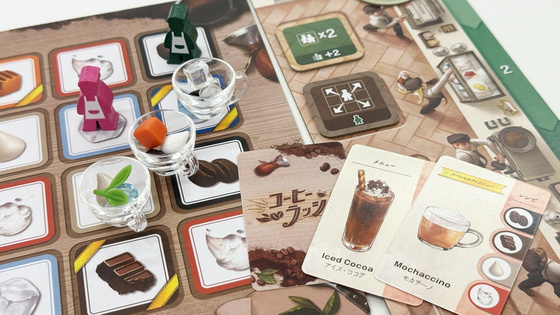
Coffee Rush is a board game where you become a barista at a popular coffee shop and have to deal with the orders that come one after another. I was given the Japanese version for
Coffee Rush Japanese Version - Engames Shop
https://www.engames-s.com/product/2847
The Coffee Rush package looks like this.
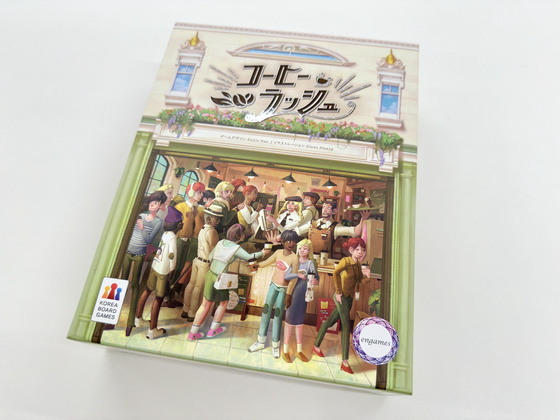
The target age is 8 years and older, the number of players is 2-4, and the play time is expected to be 30 minutes.
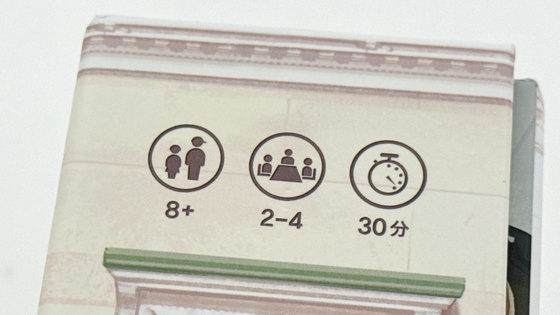
Open the lid and check the contents. The rule manual looks like this.
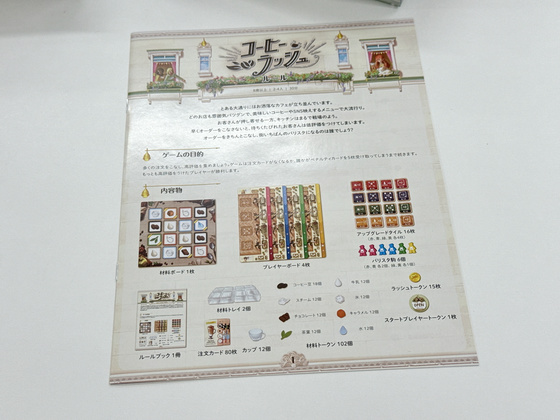
Ingredient board and 4 player boards.
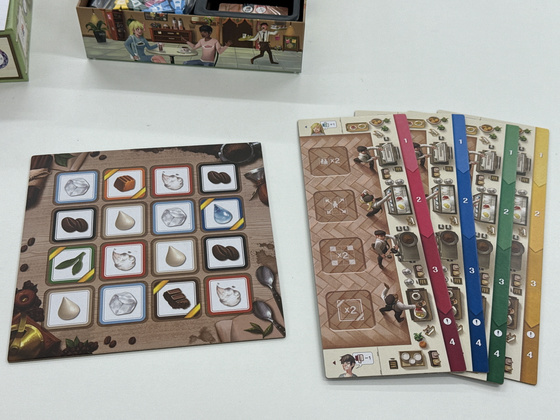
Some of the tokens and tiles are made from cardboard.
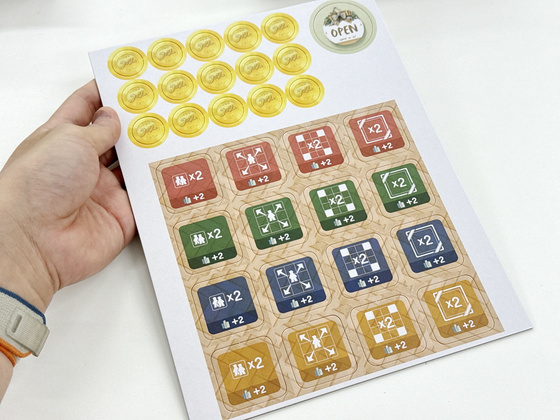
It has slits so you can easily separate it from the cardboard without using scissors or a utility knife.
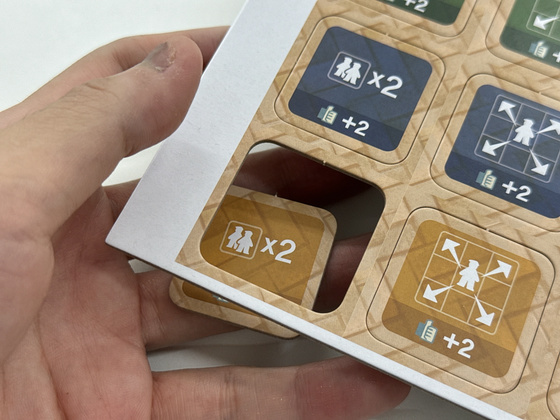
There are 4 types of upgrade tiles in 4 colors.

15 Rush Tokens.
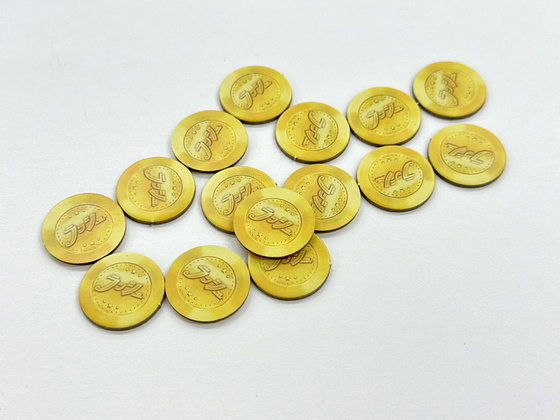
1 Start Player Token.

80 order cards.
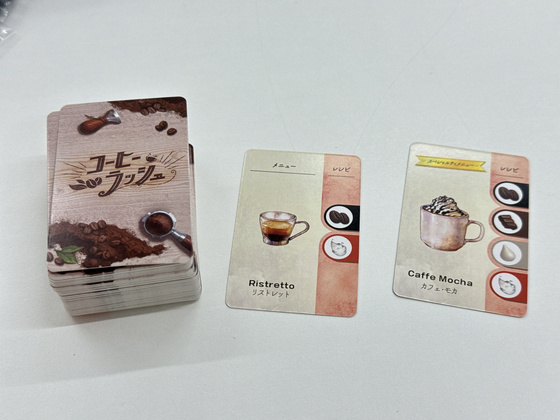
There are eight types of ingredient tokens. The top row is coffee beans, milk, steam, and ice. The bottom row is tea leaves, chocolate, caramel, and water.
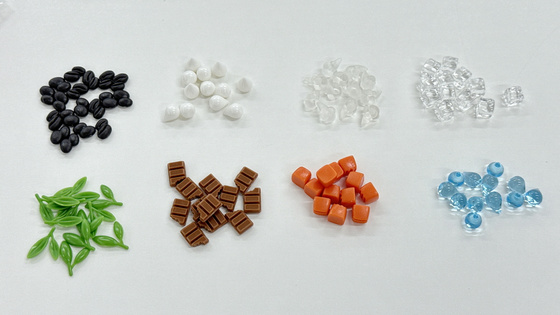
There are two ingredient trays, each of which can hold four different ingredient tokens.
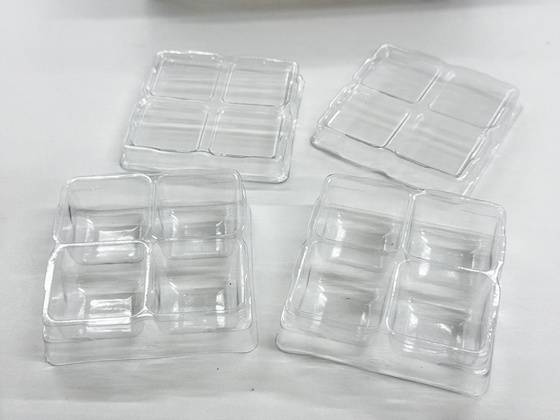
This is what it looks like when you put material tokens in the material tray.

There are six ballista pieces in four different types. There are two red and two blue pieces for two-player games.
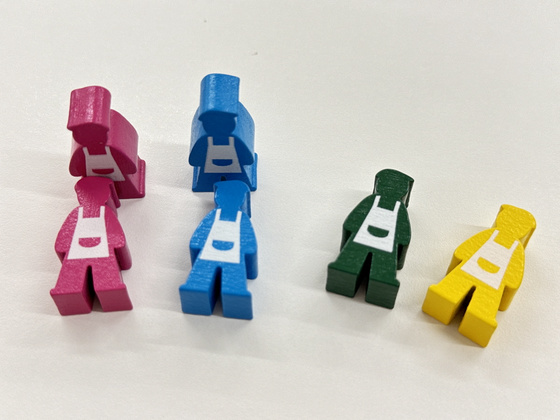
12 clear plastic cups.
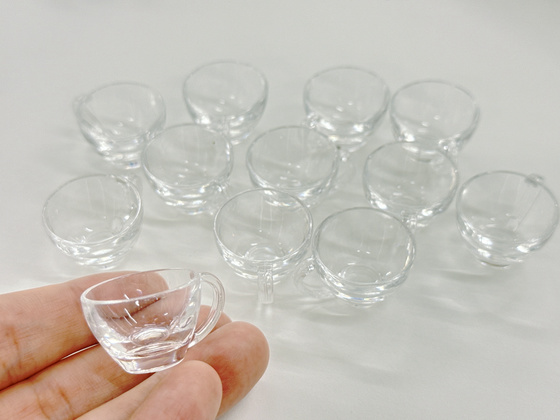
Place the ingredient board in the center of the table. Place the shuffled order cards face down as a deck, then line up the rush tokens and two ingredient trays.
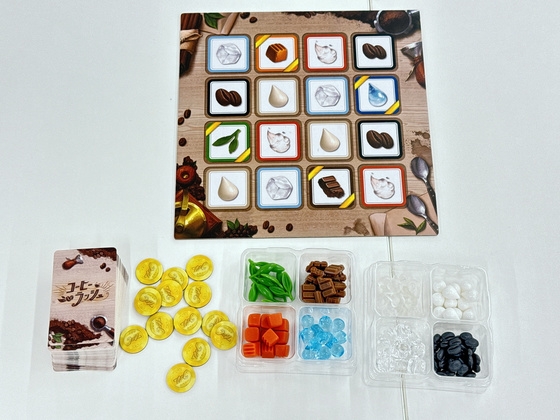
Each player is given a player board, a ballista piece corresponding to the color of their player board, and three cups. Also, on the player board, arrange the upgrade tiles face down as shown below.
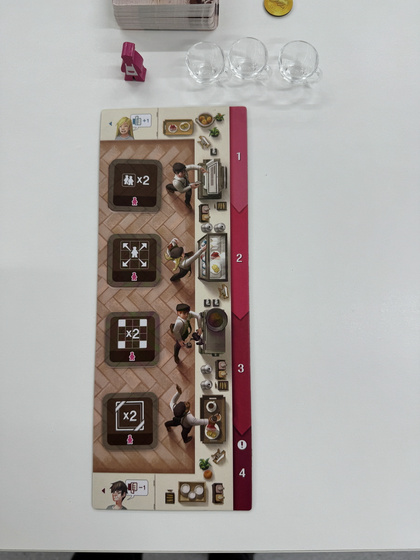
Place one card on each row of the player board, one on the 1st and one on the 2nd. However, the starting player must place two cards on the 1st row.
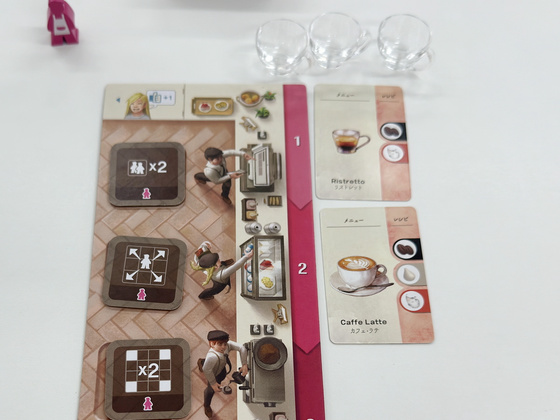
Now we're ready to play. This time, we tried playing with three people.
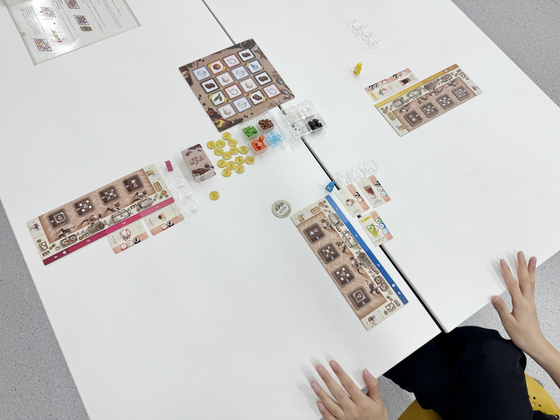
At the start of the game, starting from the last player and working backwards, place a ballista piece on any tile on the ingredient board.
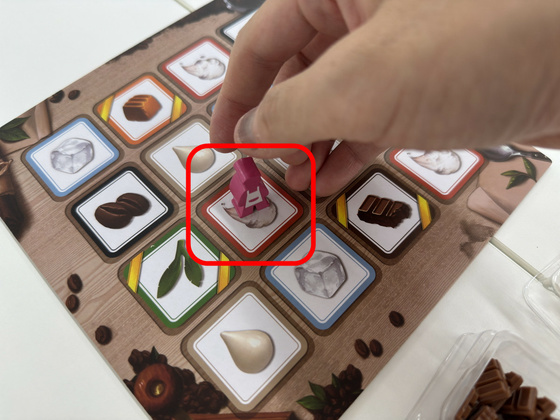
Once placed, you receive the material token for that space.
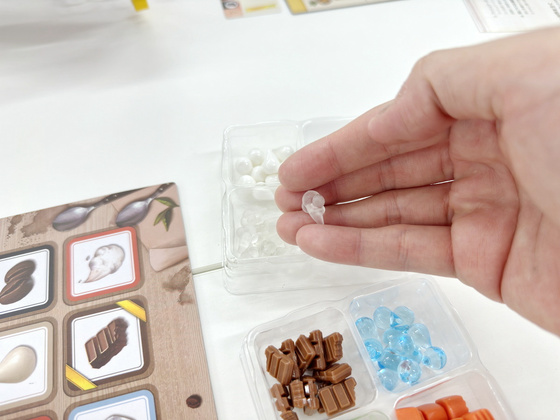
Place the material tokens you receive into one of the three cups.
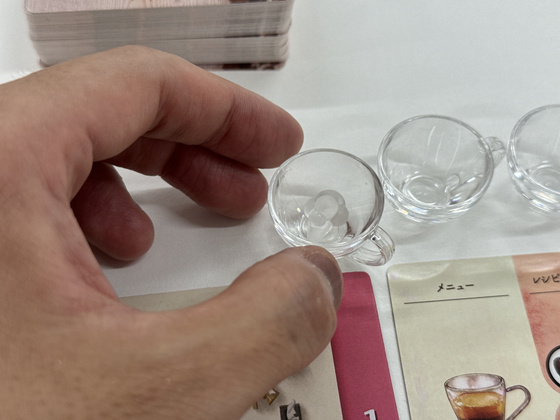
Once everyone has placed their barista pieces, the starting player takes their turn. During their turn, they will perform the following actions: move their barista piece, put the ingredient tokens they have acquired into their cup, fulfill the order, and move their order card down one level.
The barista piece can generally move up to three spaces per turn. For example, the blue player below moved through the 'Steam,' 'Coffee Beans,' and 'Water' spaces as shown by the red arrows.
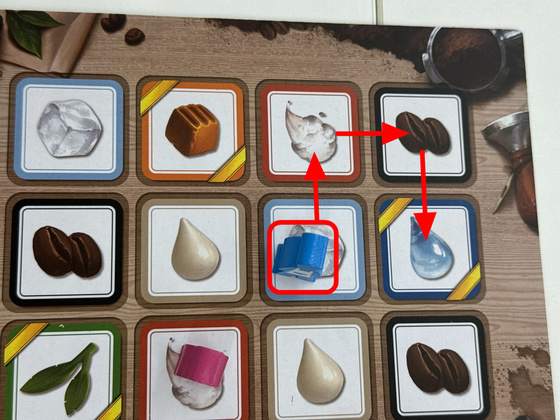
At this time, you will receive material tokens for the squares you pass through.
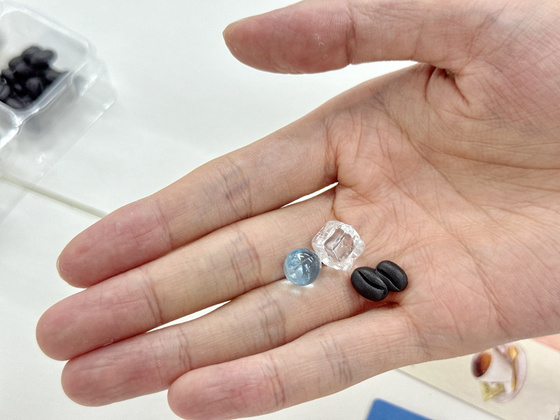
The material tokens you receive can be placed in the cup. However, you must either place the material tokens in the cup during your turn or discard them if you don't need them; you cannot keep them in another location.
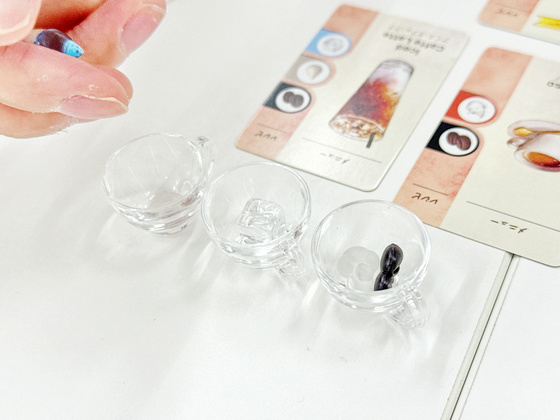
Once you have collected all the ingredient tokens according to the recipe on the order card, you have completed the order.
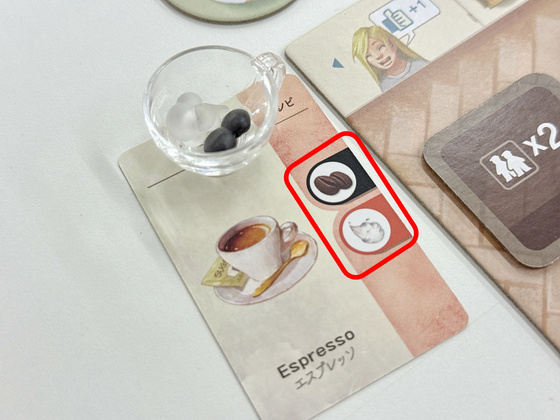
Completed order cards are placed face down in the upper left corner of the player board. As the '+1' sign indicates, completing one order earns one victory point. The player with the most victory points wins the game, so all you have to do is collect as many ingredients as possible and keep completing orders.
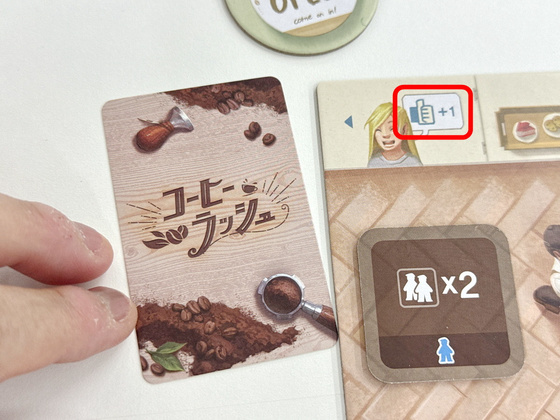
And when a player has completed an order, all other players draw the number of orders they have completed from the deck of order cards and add them to their own player board. In other words, the more other players work and complete orders, the more orders your shop will have.
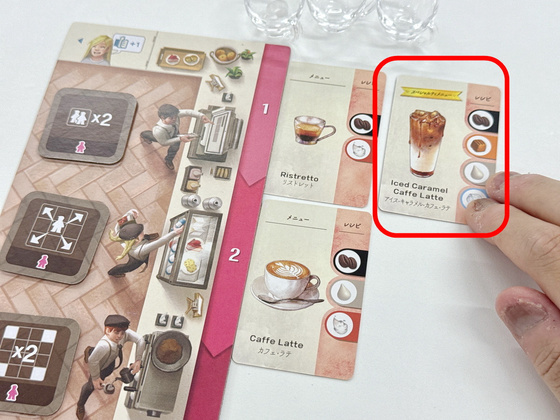
If you have completed three or more order cards, you can discard these three cards to upgrade your ballista piece. The three discarded order cards do not count as victory points, so you will lose three victory points.
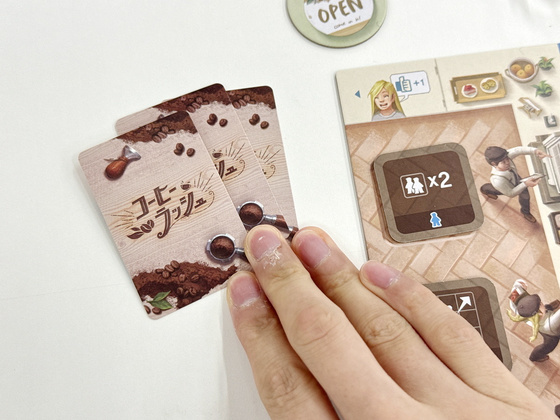
There are four types of updates, which improve the movement of the ballista and the acquisition of material tokens. Choose one of the four update tiles on your player board and flip it over. Note that flipping an update tile over will earn you two points, so your final victory points will be minus one point.
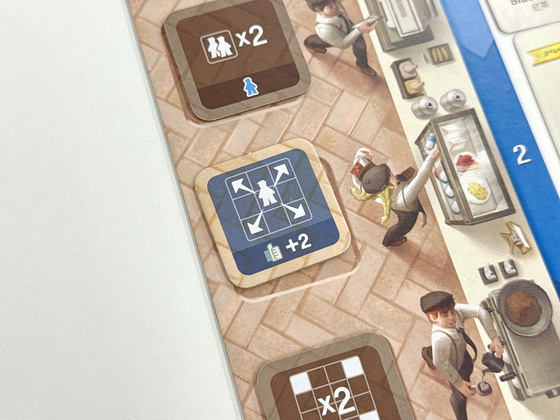
This update tile has the effect of 'When you pass through a square where another player's ballista piece is located, you will receive double the material tokens for that square.'
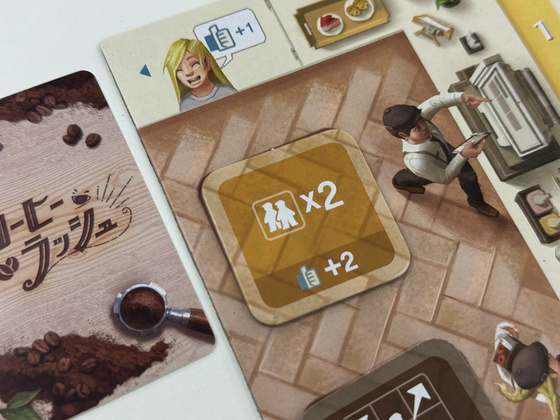
For example, the yellow ballista piece moved along the route shown by the red arrow below.
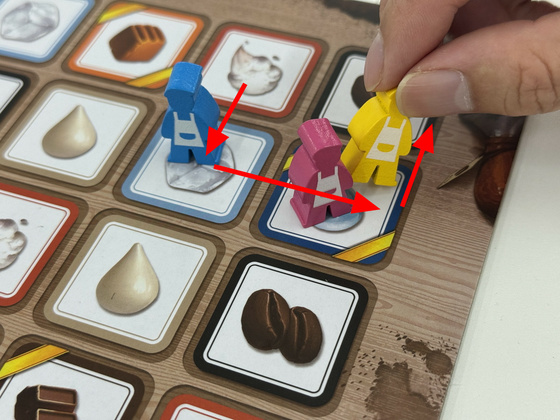
You can get two of each of the ice and water that other players' barista pieces had. In this way, by updating your barista piece, you can get more material tokens in one turn, so you can fulfill multiple orders at once.
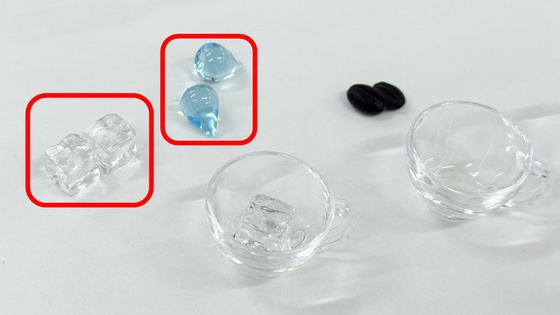
Some order cards have 'Special Menu' written on them. If you order this special menu item, you will receive one rush token.
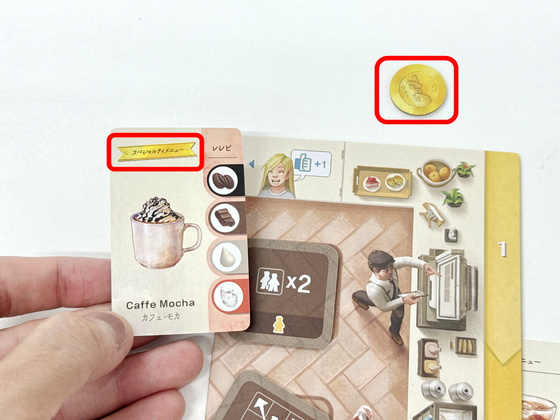
Rush tokens can be paid when moving a ballista piece, allowing you to move one additional space per token. For example, below shows two rush tokens being paid.
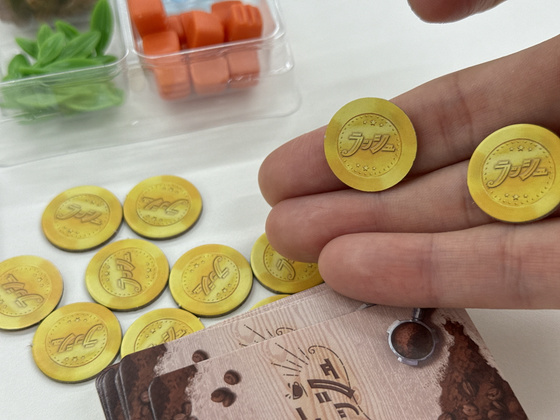
Normally, the ballista piece can only move three spaces per turn, but by paying two rush tokens, it can move up to five spaces.
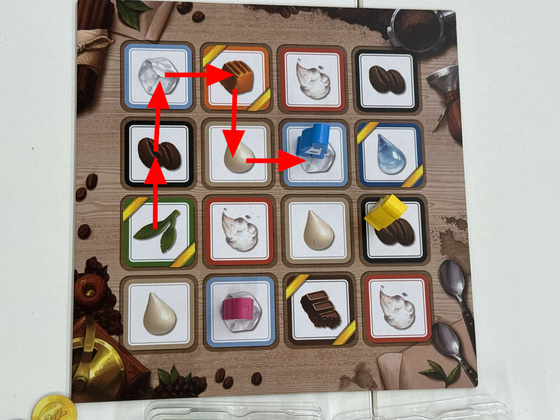
If you get rush tokens, you can get more material tokens in one turn, making it easier to complete orders.
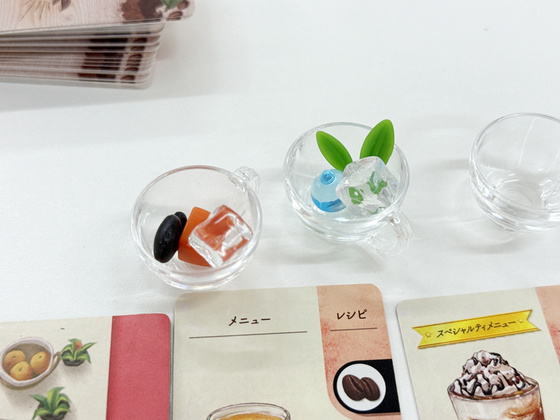
When your turn is over, move the order card down one row. If you are unable to complete the order and the card falls below the fourth row, it means that you were unable to complete the customer's order.
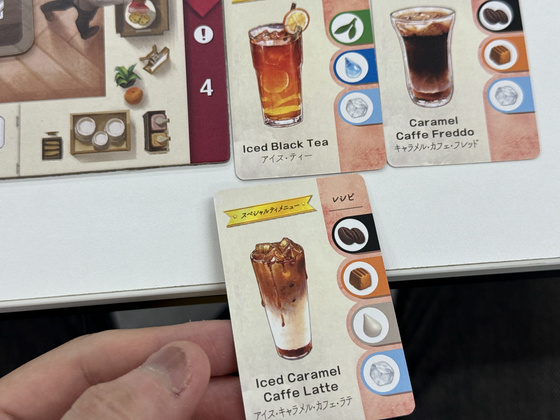
Uncompleted order cards become penalty cards and are placed face down in the bottom left corner of the player board. Each penalty card will result in a 1 point deduction. Because it is a point deduction element, you must be careful not to fail to complete orders. However, you will receive one rush token for each penalty card, so adding a penalty card is not necessarily a disadvantage.
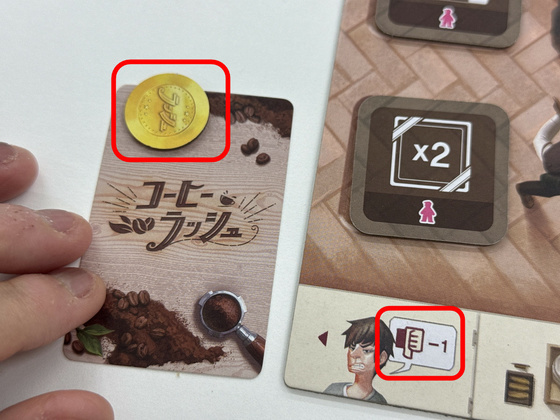
As other players complete orders, order cards are added to your counter. As a result, the order cards come pouring into the store like waves, and some players scream, 'I can't handle them all!' It's very important to think ahead, such as 'I can't order this, so I'll just put it as a penalty card,' or 'If I move like this next time, I can handle multiple order cards.'
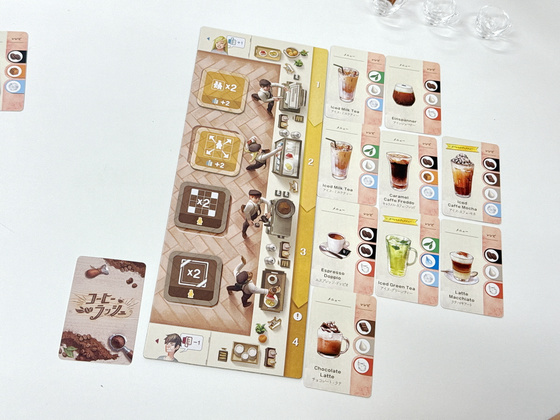
The game ends when someone accumulates five penalty cards or when there are no cards left in the deck.
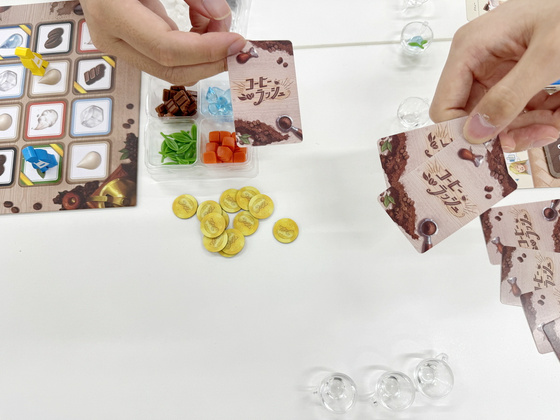
When the game end conditions are met, flip the start player marker over to display 'CLOSED.'
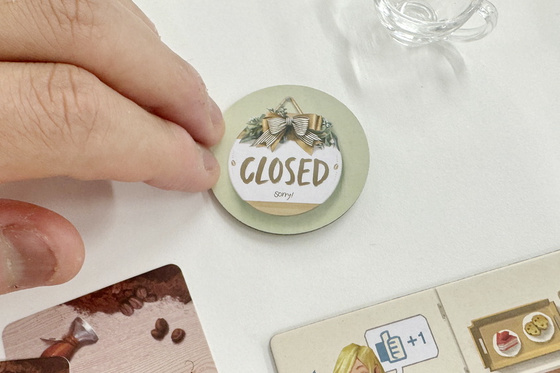
Finally, the player with the highest score wins: 'Number of completed order cards x 1 point' + 'Number of face-up update tiles x 2 points' - 'Number of penalty cards x 1 point.' The following player had 4 completed order cards, 3 face-up update tiles, and 1 penalty card, for a total of 9 points.
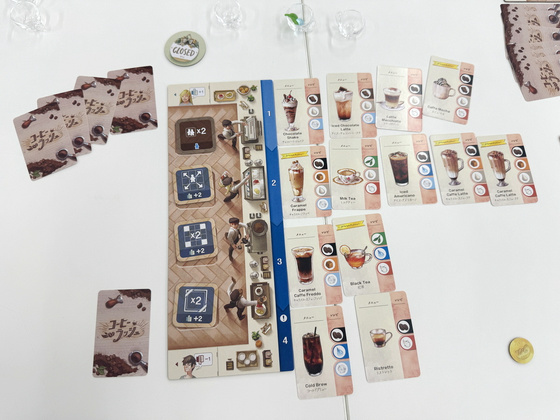
Coffee Rush's rules are easy to understand, and even those unfamiliar with board games can quickly pick up the basics. However, players must consider the movements of their barista pieces to maximize the number of order cards they receive. The game also requires deep strategic decisions, such as deciding which order cards to give up at what stage and whether to prioritize difficult or easy orders. While simple, it's a very challenging game, allowing players to experience the hustle and bustle of a popular cafe. Another positive aspect was the elaborate design of the components, such as the ingredient tokens and cups.
The Japanese version of Coffee Rush costs 5,500 yen including tax, and can be purchased from Amazon.co.jp from the following page.
Amazon | Coffee Rush Japanese Edition Engames | Board Games | Toys
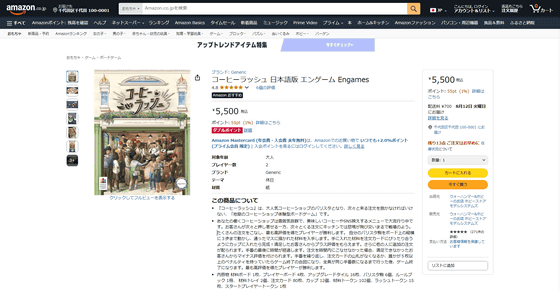
You can also get Coffee Rush from the gift article below.
GIGAZINE Summer gift release project 'Answer the questionnaire and take them all!' - GIGAZINE

Related Posts:







